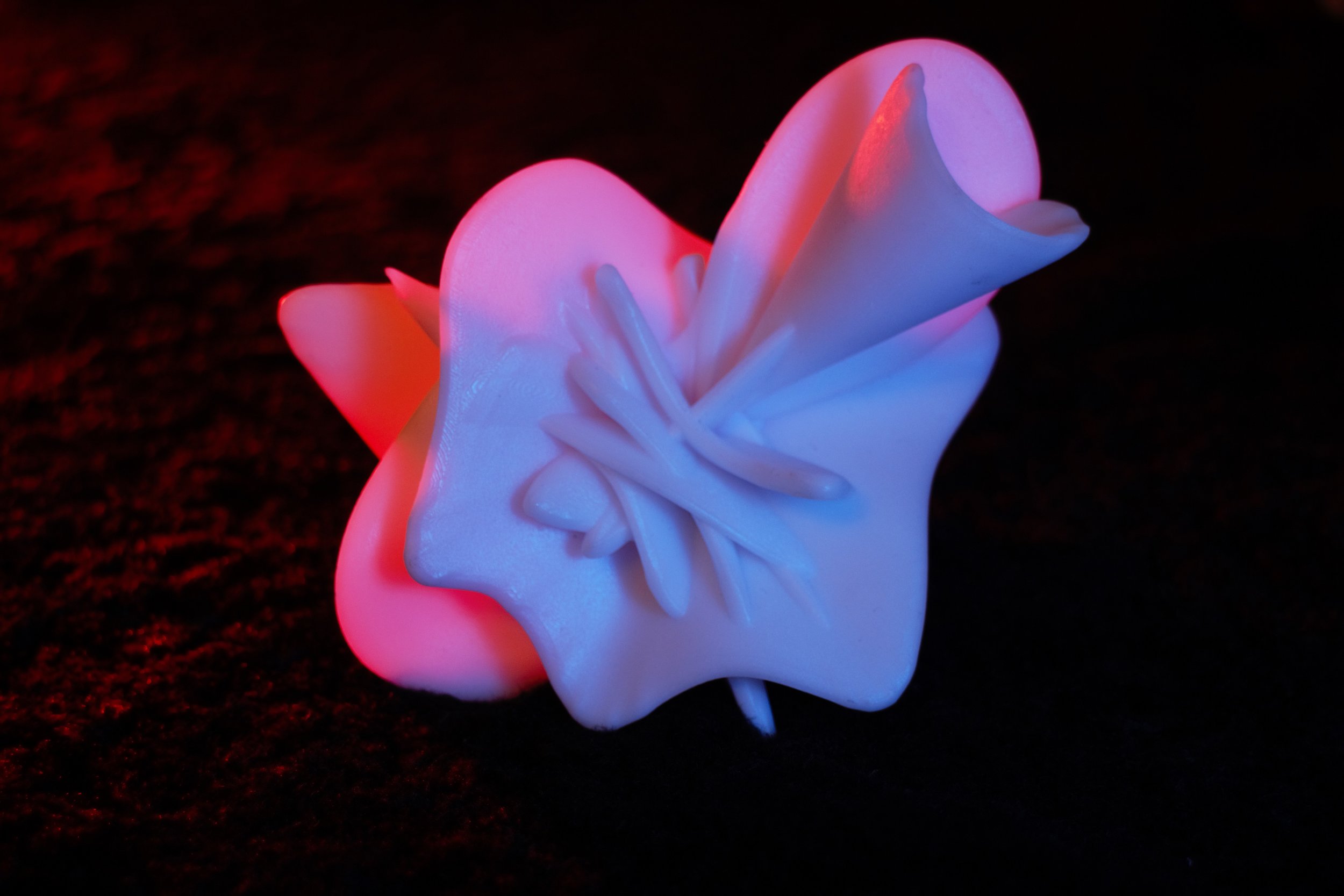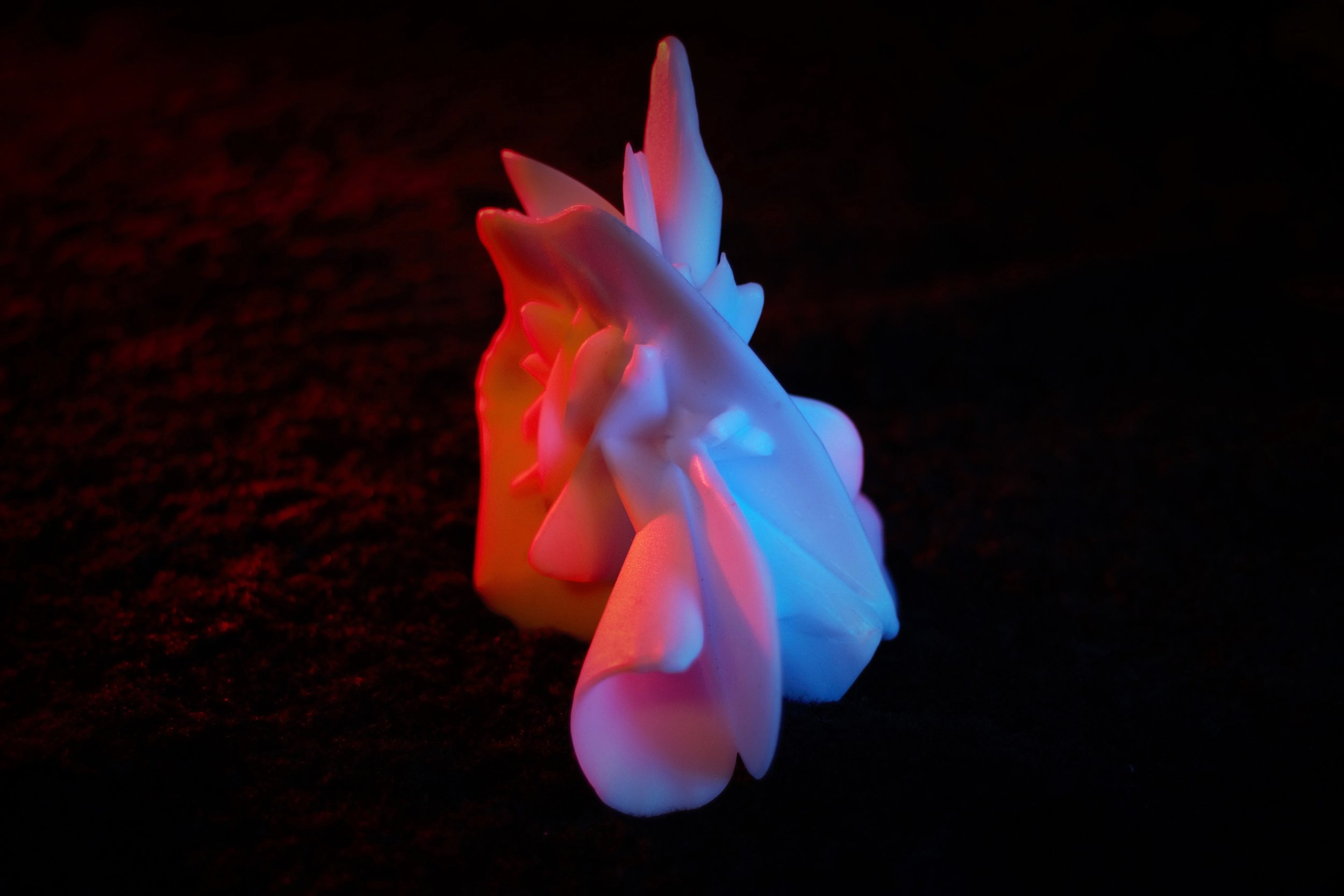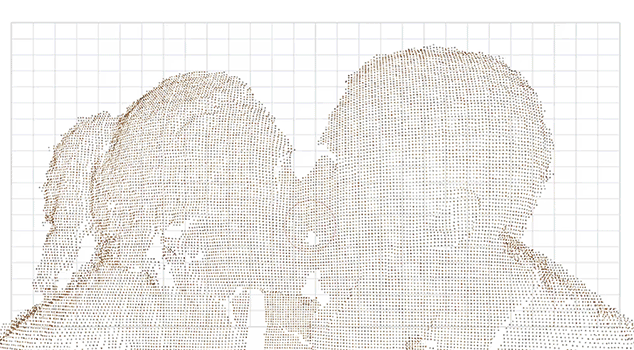01 EMOTION CAPTURE
DOC 234—34/2



AUTHOR: Arthur Gouillart
KEYWORDS: Symbolics, Universal gesture, Love, Magnetic tracking, 3D-printing, Wearable, Algorithm, Data visualisation
PRESENTATIONS:
Science Gallery, Dublin IE (2019)
SomoS Art Gallery, Berlin DE (2018)
V&A Museum, London UK (2018)
Barbican Centre, London UK (2018)
KEYWORDS: Symbolics, Universal gesture, Love, Magnetic tracking, 3D-printing, Wearable, Algorithm, Data visualisation
PRESENTATIONS:
Science Gallery, Dublin IE (2019)
SomoS Art Gallery, Berlin DE (2018)
V&A Museum, London UK (2018)
Barbican Centre, London UK (2018)
Caresses, kisses and amorous practices are an essential embodiment of our emotions and a means of expression that has resonated through time. These affectionate and caring gestures are present in birds and mammals, and comprise the core of the bonding processes and help to define physical intimacy. Gifts in the form of jewellery and art exemplify this, and are as a sign of affection or engagement that dates back to Babylonian civilization. While the vast majority of the designs are rely on constructed symbols, such as that of the rose of the heart, they do not carry the intimate knowledge of the love the couple shares.
“Emotion Capture” is project exploring the representation of our feelings of love through the archetypal gesture of the kiss. The unique pathway of a kiss is documented by way of magnet tracking, whereby hall sensors and a constellation of magnets which are embedded in a wearable device. Using trilateration algorithms, data gathered during this process of capture is translated in distance to reconstruct a trail of action. The resulting ‘drawing’ is then rendered and made material through the use of 3D-printing technology.
![]()
“Emotion Capture” is project exploring the representation of our feelings of love through the archetypal gesture of the kiss. The unique pathway of a kiss is documented by way of magnet tracking, whereby hall sensors and a constellation of magnets which are embedded in a wearable device. Using trilateration algorithms, data gathered during this process of capture is translated in distance to reconstruct a trail of action. The resulting ‘drawing’ is then rendered and made material through the use of 3D-printing technology.

